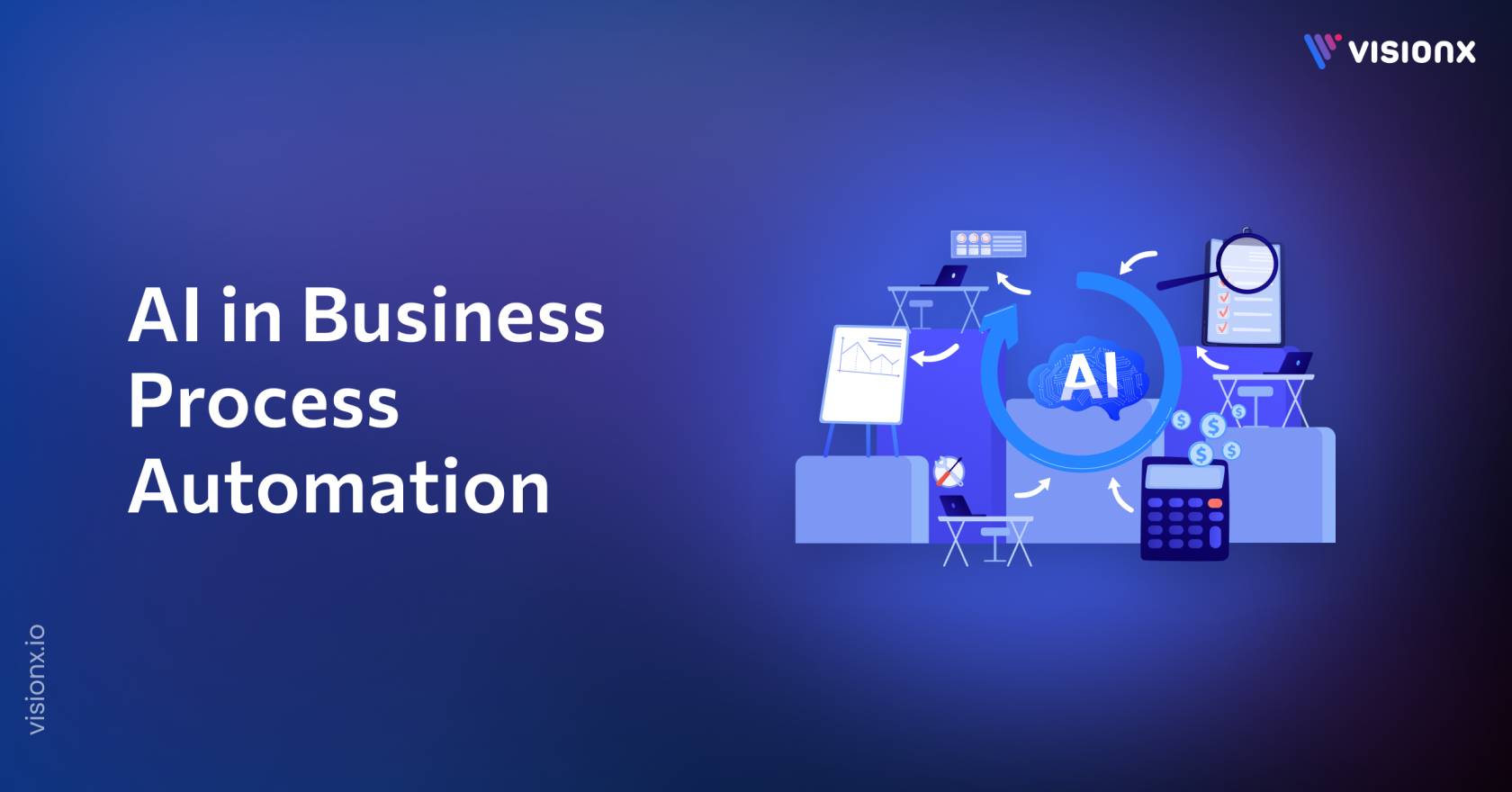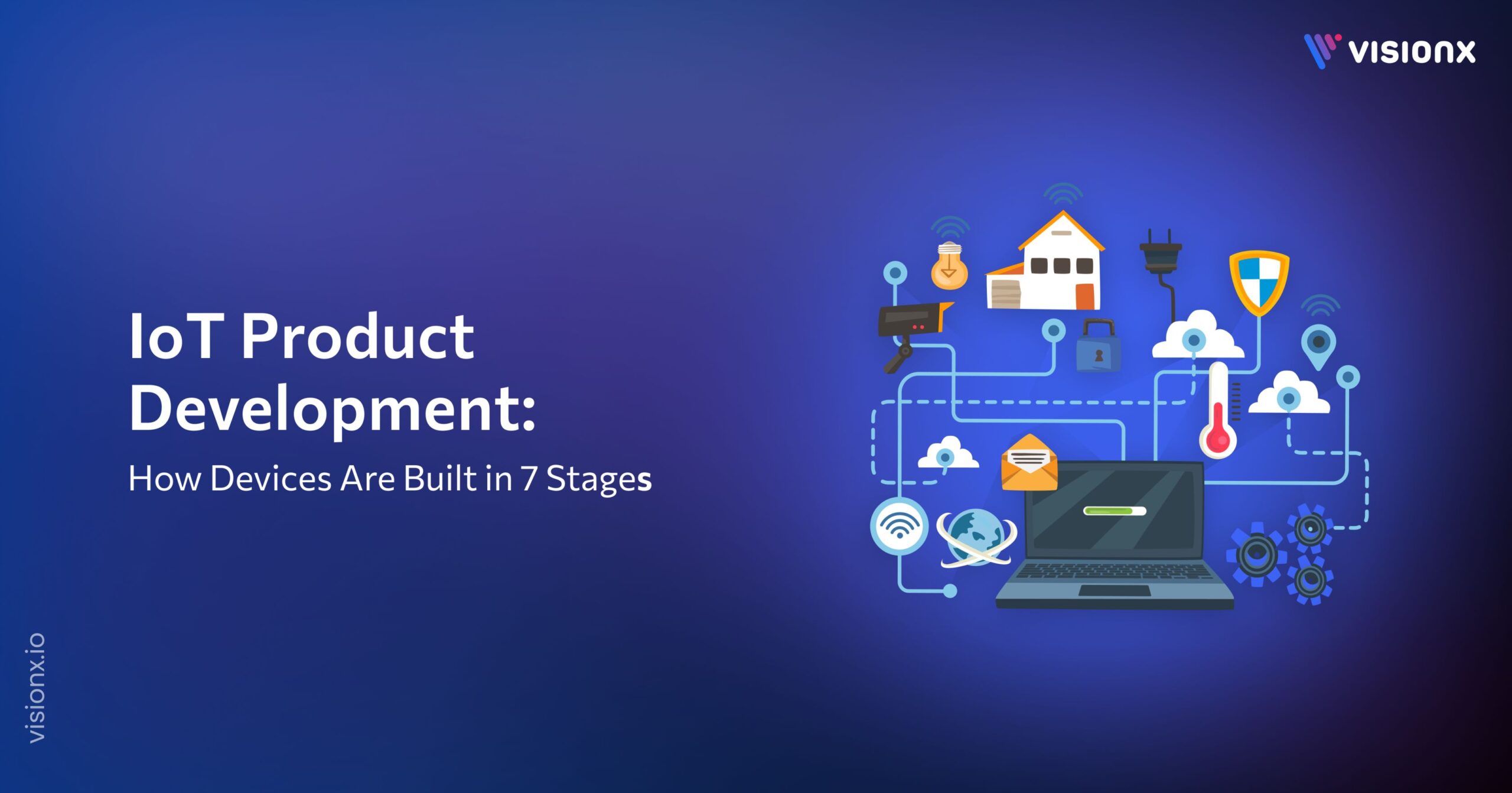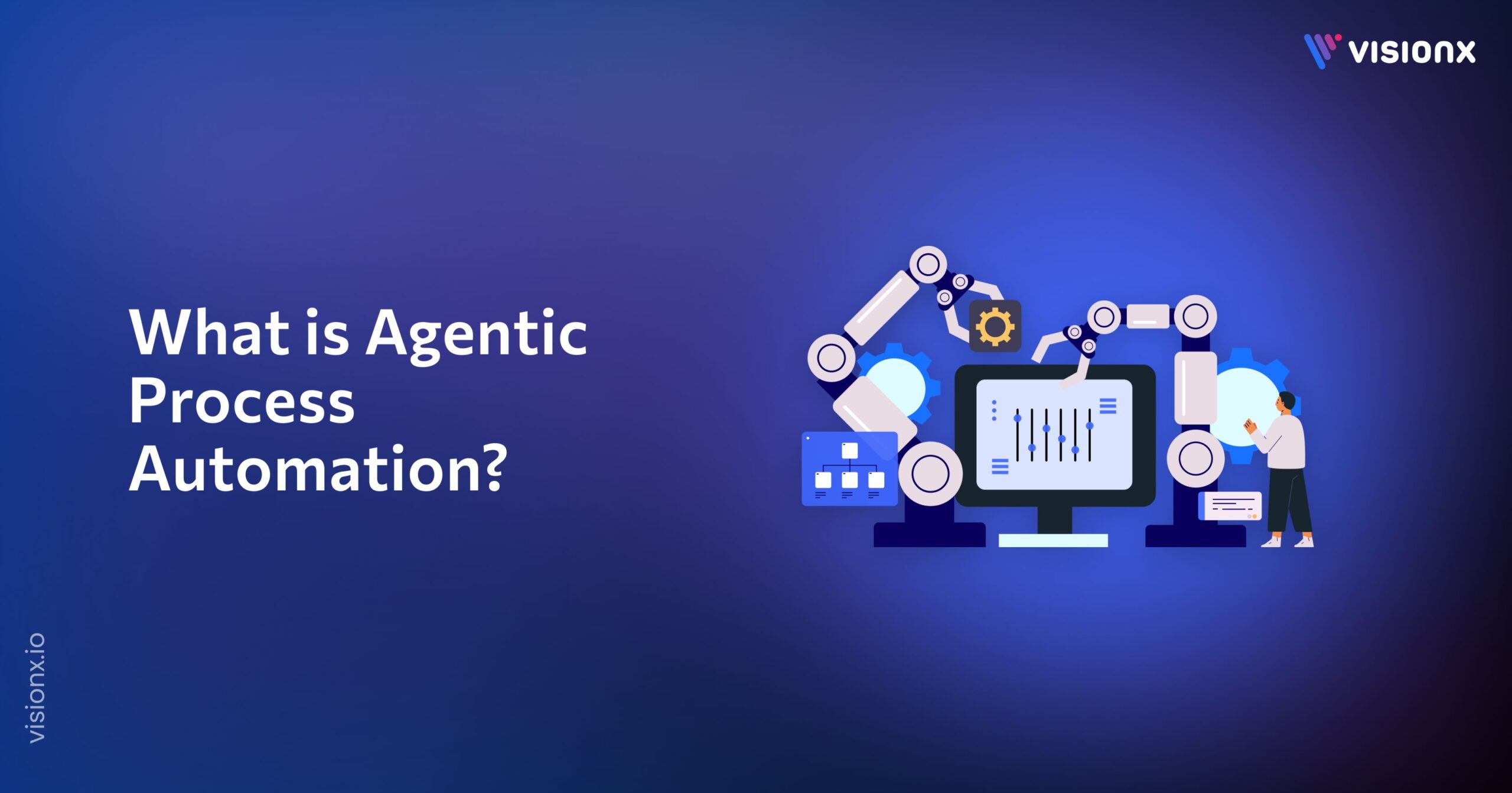Your refund request got approved in under a minute. No one read the email. No one opened a spreadsheet. But still, the job got done. AI business process automation is discreetly operating in the background to support that pace.
As companies race to stay ahead, the global market for AI business process automation is on track to hit USD 19.6 billion by 2026, up from USD 9.8 billion in 2021.
Airlines now rebook flights before passengers complain. Telecom firms fix billing errors before you notice. Invoices sort themselves. Emails route without a single click. What used to take hours now takes seconds because of businesses introducing AI in business operations.
By the end, you’ll know how to use AI business process automation and what it means for your bottom line.
What Is AI Business Process Automation?
AI business process automation is the use of artificial intelligence to automate tasks within business workflows that usually need human judgment. It uses technologies like machine learning, natural language processing (NLP), and generative AI solutions to understand patterns so that it can enhance efficiency, accuracy, and decision-making.
Traditional automation sticks to rules. If X happens, do Y. But real life doesn’t always follow rules. AI-driven automation can adapt, predict, and improve over time. It handles unstructured data, analyzes patterns, and makes decisions with minimal input.
So, what’s the role of AI in business process automation?
It turns routine processes into intelligent systems that can scale, self-optimize, and reduce manual effort, which makes AI and process automation a core part of digital transformation strategies. From invoice processing to customer onboarding, AI process automation helps businesses move faster and smarter with fewer resources.
How AI Business Process Automation Works
AI business process automation helps you remove delays and streamline operations. Here’s a quick view of how it all fits together:
Identify Processes:
Spot repetitive or time-consuming tasks in your operations. Focus on areas where AI for business processes can give you speed and accuracy.
Data Collection and Preparation:
Use structured and unstructured data from internal tools, systems, and platforms. This step powers business process automation with AI.
AI Model Development:
Develop AI models that support decisions and uncover insights. Machine learning helps your systems become smarter with use.
Integration and Deployment:
Link these AI models to your tools. Robotic process automation RPA and AI-powered automation make everything seamless.
AI-Powered Output:
Your AI system now automates processes with real-time actions, updates, or decisions. This is the core concept of AI business automation.
7 Ways AI is Transforming Various Aspects of Business Process Automation
Here’s how AI is revolutionizing business automation:
1. Data-Driven Decisions
Modern companies rely on data to run well. With AI business process automation, decisions come from real-time insights. AI systems sift through large volumes of information, helping teams track patterns, avoid errors, and act fast. You get clear answers when you need them without having to wait for reports.
2. AI-Powered Automation
AI-powered automation adapts based on outcomes. It replaces repetitive jobs with smart actions. For example, AI handles invoice sorting, order approvals, or leave requests without human help. This gives time back to your employees and brings speed, quality, and consistency across departments.
3. Business Process Automation with AI
Business process automation with AI brings together disconnected platforms, tools, and systems. It removes silos by connecting operations across sales, finance, HR, and support. This improves response times, reduces manual errors, and ensures that each team works from the same data source.
4. Machine Learning for Accuracy
AI with machine learning improves business accuracy at scale. It flags gaps, predicts issues, and enables corrections before they grow into problems. In every step of the process, machine learning increases accuracy and decreases rework, from locating production bottlenecks to guaranteeing on-time delivery.
5. Intelligent Automation with RPA
Intelligent automation combines AI with Robotic Process Automation (RPA) to not only follow rules but also adapt in real time. You get the best of both. RPA handles structured, rule-based tasks, while AI makes dynamic decisions. This combination transforms how you manage operations end to end.
6. Fraud Detection and Risk Management
One of the biggest strengths of AI business automation is its ability to detect fraud and reduce risk in real-time. AI monitors transactions across accounts, detects irregular behavior, and triggers alerts long before a breach happens. This protects both customer trust and company assets with minimal manual review.
7. AI for Business Processes Across Functions
In every department, from customer support to procurement, AI for business processes brings clarity and control. It updates databases, screens applicants, sorts emails, and prioritizes cases. With AI for process automation, businesses can operate around the clock, scale faster, and deliver better outcomes with fewer resources.
Benefits of AI Business Process Automation
AI business automation brings measurable impact across your operations. Here’s how it helps reduce effort, improve accuracy, and drive smarter outcomes.
Reduced Human Intervention
AI for business automation minimizes the need for manual input. You can rely on AI systems to complete tasks without constant oversight, reducing human intervention and freeing up your time.
Automates Repetitive Tasks
AI business automation handles repetitive tasks with speed and accuracy. This eliminates delays and errors, helping you stay efficient and consistent.
Enhancing Efficiency at Every Step
AI-driven automation streamlines operations, reducing bottlenecks and waste. You enhance productivity while enhancing efficiency across your workflow.
Improved Decision Making
AI for process automation uses real-time data to support smarter choices. You can improve decision-making with clear, timely insights and act with confidence.
Better Customer Experiences
AI and process automation help you respond faster to clients. This improves service quality, boosts satisfaction, and creates memorable customer experiences.
Cost Reduction
AI for business processes cuts expenses by automating workflows and minimizing errors. With optimized resource use, you gain real value while lowering costs.
Ensure Better Compliance
AI for business automation watches over your processes to keep them aligned with rules. It spots risks fast, without the need for manual checks. With audits and alerts, AI-driven automation supports strict policy control and improves decision-making. This builds trust and control across your teams.
Key Use Cases of AI Business Process Automation
The following are some of the most impactful and practical use cases across industries:
1. HR & Payroll Automation
AI tools handle tasks like payroll, onboarding, and document checks. They cut errors, speed up actions, and support HR teams. This leads to better accuracy and smoother operations.
2. Workflow and Form Automation
AI replaces manual steps with rule-based flows and smart forms. Tasks move forward without delays or confusion. This helps teams follow clear paths and save time.
3. Integration and Data Sync
AI links data across tools like CRM, ERP, and HR software. It updates records instantly and avoids gaps. Teams work with the same facts across all systems.
4. Process Intelligence and Optimization
AI tracks how tasks move through systems and spots weak points. It gives tips to fix slow spots and boost output. 53% of businesses have implemented Robotic Process Automation (RPA) to support operational efficiency.
Emerging Technologies Driving AI Automation
Below are key technologies that shape how AI drives automation at scale.
Generative AI
- Builds workflows from plain-text prompts
- Creates summaries from documents and transcripts
AI Copilots and Assistants
- Suggest next steps in tools like CRM or HR systems
- Help users complete tasks faster with fewer errors
Process Mining + AI Orchestration
- Maps task flows to find slow steps and gaps
- Sets up smart flows based on real work data
AI Agents for Integration and Error Handling
- Sync systems and fix mismatched data
- Detect issues and guide auto-resolution
Challenges and Risks in AI Business Automation
Here are the four risks that can derail your intelligent automation initiative if you don’t address them properly.
1. Data Quality Issues
Poor or inconsistent data can lead to faulty outputs or failed workflows. If AI business process automation relies on bad inputs, it may produce flawed results or automate tasks incorrectly. Clean, structured data is critical for effective AI workflow automation.
2. Overdependence on Automation
Relying too much on AI-powered automation tools can weaken human oversight and reduce flexibility. While automation boosts speed, businesses must preserve space for decisions that need human context or emotion, especially in customer service or HR processes.
3. Integration Gaps
Not all tools connect well with legacy systems, causing delays or errors. For successful AI automation for small businesses or enterprises, seamless integration and data sync across platforms is essential to keep operations smooth.
4. Security and Privacy Concerns
As AI tools handle sensitive data, they pose privacy and compliance risks. Strong governance is a must for secure business workflow automation, especially in finance, healthcare, and regulated industries where data rules are strict.
Implementation Considerations for AI Business Process Automation
Follow these four critical steps to ensure your AI business process automation project delivers measurable results:
Step 1: Assess and Prepare Your Foundation
Start with a deep look at your data. Check if it’s accurate, easy to reach, and managed under clear rules. Review your current business processes and mark the ones that slow things down. Look at your tech stack to see if it can support AI-powered automation tools. This step sets the ground for real progress.
Step 2: Design and Plan Your AI Strategy
Choose AI systems and tools that match your business goals. Build an architecture that can grow with your needs. Outline a clear path for change, with strong support for your team. Cut out assumptions by setting plans that guide each step. This helps reduce human intervention and keeps your goals in focus.
Step 3: Deploy and Monitor Your Pilot
Roll out your AI setup in a small, low-risk area. Put real-time checks in place and make sure your security stays tight. Add backup plans and collect honest feedback from users. This helps fix issues early and sets the tone for a smooth full rollout of your AI business automation system.
Step 4: Scale & Optimize Operations
Expand AI automation to adjacent processes based on pilot results. Continuously optimize performance through user feedback integration while you scale infrastructure to support enterprise-wide deployment. This structured approach transforms pilot success into an organization-wide competitive advantage through intelligent process automation.
How VisionX Powers AI Business Process Automation
Choosing the right AI business process automation solution matters, especially when you need speed, accuracy, and flexibility. VisionX delivers real value without forcing major changes to your current systems. You get hands-on support to automate workflows, reduce errors, and scale operations.
Here’s what you get with VisionX:
- AI-powered automation tailored to your workflows
- Seamless integration with your tools, CRMs, and ERPs
- Data-driven insights to improve decision-making
- Scalable platforms that support both structured and unstructured processes
- Expert-led implementation with low-code configuration
VisionX works with your existing tech stack. Our team builds custom AI solutions that match your goals, so you can cut costs and focus on business growth from day one.
If you want to remove repetitive tasks, enhance accuracy, and bring true intelligence to your operations, VisionX is ready to help.
FAQs
What is AI automation of business processes?
AI automation of business processes means using smart tools to run tasks and actions without human effort. It improves speed, lowers mistakes, and helps teams focus on higher goals.
How to use AI in business processes?
To use AI in business processes, start with simple tasks that slow teams down. Use AI-powered automation tools to handle forms, data checks, and approvals. This makes work faster and more consistent.
How is AI transforming business process automation?
AI changes business process automation by reducing effort, cutting costs, and helping teams make fast calls. With AI business automation, companies move quickly and serve customers better.
How can AI be used for automation?
Use AI for process automation in support, finance, or HR. It reads data, spots issues, and acts without delay. This keeps work smooth and helps small teams grow with ease.
About Author

M. Waqas Mushtaq is the Co-Founder and Managing Director of VisionX, whose passion for innovation fuels the company’s growth. Under his strategic direction, VisionX promotes a culture of excellence, solidifying its position as an industry leader.


